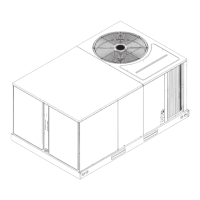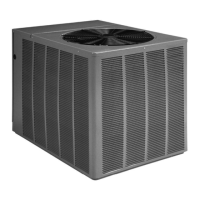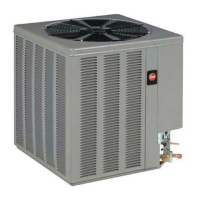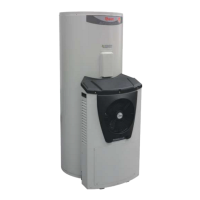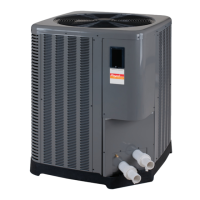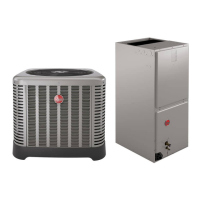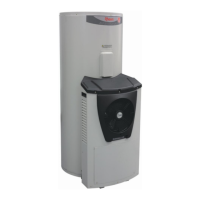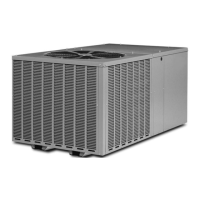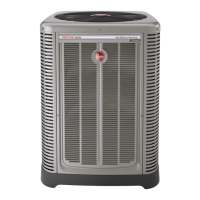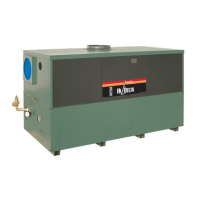35
Accessories
10.0 DIAGNOSTICS AND TROUBLESHOOTING
10.1 Test and Fault
Recall Modes
• Enter TEST mode by pressing the UP button with an insu-
lated probe for ve (5) seconds and release.
• The TEST mode causes the following:
1) Resets the TSODC from any active protection
lockout mode.
2) Reset the 4-minute anti-short cycle timer.
3) Energizes the unit without a command for unit
operation.
• If the 4-minute anti-short cycle timer or 30 second minimum
run time is active (a ashing “c” or “C” is displayed on the
dual 7-segment LEDs) and a command for unit operation is
present, TEST mode causes:
1) A “c” to display momentarily on the dual 7-segment
display.
2) The compressor will start and the outdoor fan will
operate.
3) The display will change to a steady “c” or “C” to show
the current command for unit operation.
NOTE:
If a command for unit operation is present
at the end of TEST mode will cause the unit to continue to
operate.
• If no command for unit operation is present, TEST mode
causes the following:
1) A steady “c” appears on the dual 7-segments LEDs.
2) The compressor will start.
3) The compressor will turn off after 5-seconds.
NOTE: Entering TEST mode without a command for unit
operation will cause the compressor to run 5-seconds.
10.1.1 Test Mode (Test Button on
the TSODC)
• Enter FAULT RECALL mode by pressing the UP
and SELECT buttons at the same time with insulated
probes for ve (5) seconds and release.
• FC is displayed for fault history. Press SELECT
to show most recent fault. Continue to press UP to
show other alarms.
• Each fault is displayed with the most recent fault
displayed rst.
• A maximum of six individual faults can be stored.
• A “0” will be displayed with no faults are stored.
• The TSODC will automatically exit the FAULT RE-
CALL mode after displaying stored faults.
10.1.2 Fault Recall Mode
• Clear FAULT HISTORY by pressing both UP and
SELECT button for ve (5) seconds with insulated
probes and release.
• The top and bottom segments of the dual 7-seg-
ment LED ash to indicate the history has been
cleared.
10.1.3 Clearing Fault History (UP
and SELECT Buttons)
NOTE:
The memory card for the system has
specic model data for this system. For the system
data fault D1, reference the label on the memory
card.
IMPORTANT: The preferred method of unit
installation is with the EcoNet
TM
communication
system. The EcoNet
TM
communication system allows
access to the fault history of the system. This diag-
nostic information is not available at the thermostat
when a conventional 24VAC thermostat is used.
